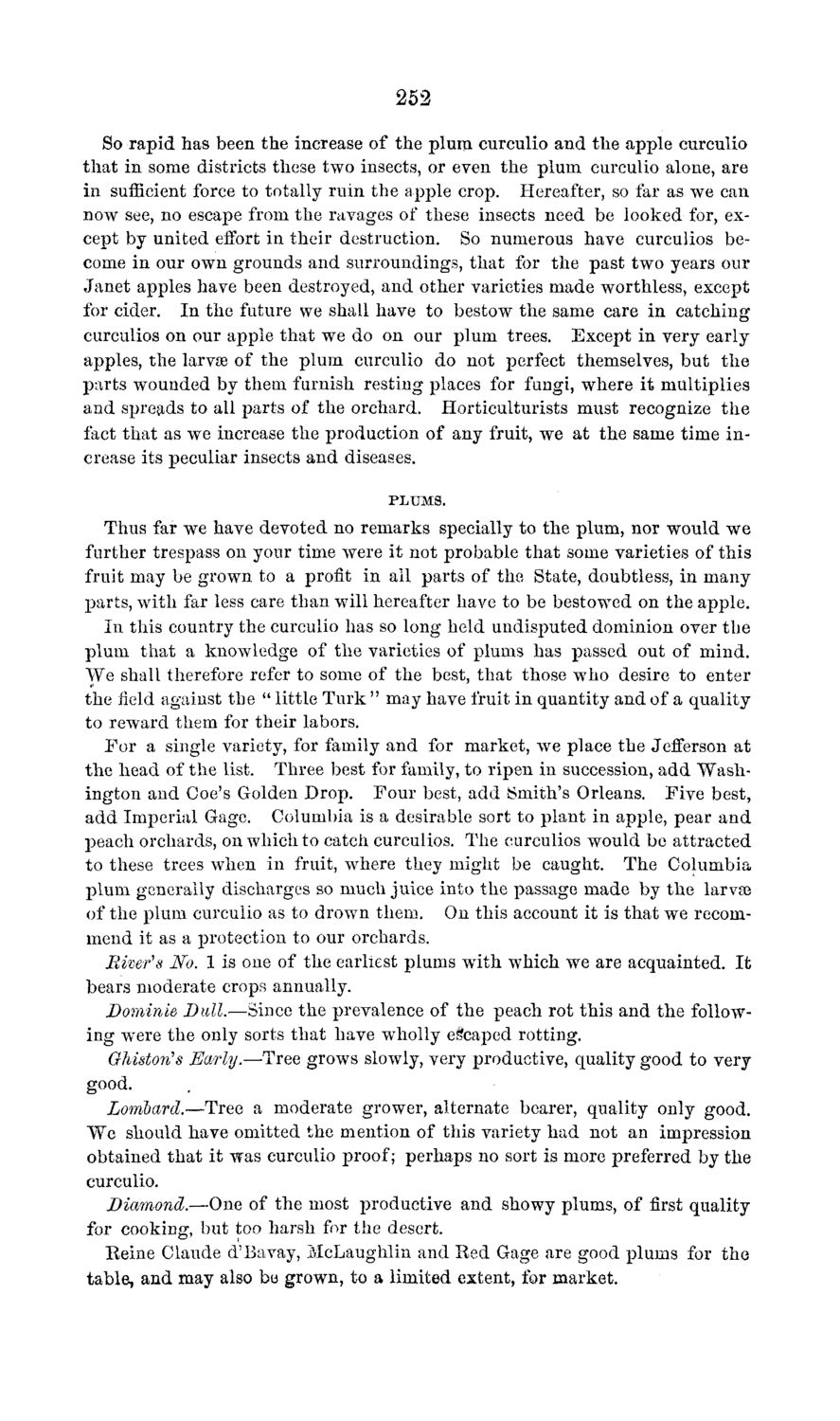| |
| |
Caption: Board of Trustees Minutes - 1869
This is a reduced-resolution page image for fast online browsing.

EXTRACTED TEXT FROM PAGE:
252 So rapid has been the increase of the plum curculio and the apple curculio that in some districts these two insects, or even the plum curculio alone, are in sufficient force to totally ruin the apple crop. Hereafter, so far as we can now see, no escape from the ravages of these insects need be looked for, except by united effort in their destruction. So numerous have curculios become in our own grounds and surroundings, that for the past two years our Janet apples have been destroyed, and other varieties made worthless, except for cider. In the future we shall have to bestow the same care in catching curculios on our apple that we do on our plum trees. Except in very early apples, the larvae of the plum curculio do not perfect themselves, but t h e parts wounded by them furnish resting places for fungi, where it multiplies and spreads to all parts of the orchard. Horticulturists must recognize t h e fact that as we increase the production of any fruit, we at the same time increase its peculiar insects and diseases. PLUMS. Thus far we have devoted no remarks specially to the plum, nor would we further trespass on your time were it not probable that some varieties of this fruit may be grown to a profit in ail parts of the State, doubtless, in many parts, with far less care than will hereafter have to be bestowed on the apple. In this country the curculio has so long held undisputed dominion over t h e plum that a knowledge of the varieties of plums has passed out of mind. We shall therefore refer to some of the best, that those who desire to enter the field against the " little T u r k " may have fruit in quantity and of a quality to reward them for their labors. For a single variety, for family and for market, we place the Jefferson at the head of t h e list. Three best for family, to ripen in succession, add Washington and Coe's Golden Drop. F o u r best, add Smith's Orleans. Five best, add Imperial Gage. Columbia is a desirable sort to plant in apple, pear a n d peach orchards, on which to catch curculios. The curculios would be attracted to these trees when in fruit, where they might be caught. The Columbia plum generally discharges so much juice into the passage made by the larvae of the plum curculio as to drown them. On this account it is that we recommend it as a protection to our orchards. Biver's No. 1 is one of the earliest plums with which we are acquainted. I t bears moderate crops annually. Dominie Dull.—Since the prevalence of the peach rot this and the following w^ere the only sorts that have wholly escaped rotting. Ghiston's Early.—Tree grows slowly, very productive, quality good to very good. Lombard.—Tree a moderate grower, alternate bearer, quality only good. W e should have omitted the mention of this variety had not an impression obtained that it was curculio proof; perhaps no sort is more preferred by the curculio. Diamond.—One of the most productive and showy plums, of first quality for cooking, but too harsh for the desert. Reine Claude d'Bavay, McLaughlin and Red Gage are good plums for the table, and may also be grown, to a limited extent, for market.
| |